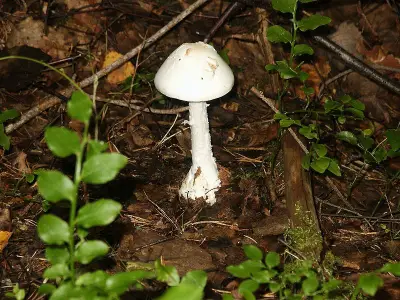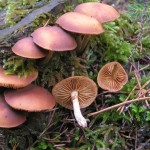
Hunting for mushrooms can be a fun hobby as well as a rewarding experience – hundreds of edible mushrooms are tasty and safe to eat – but beware! Finding wild mushrooms is not difficult, but it can be challenging to determine which mushrooms are safe to eat. Poisonous mushrooms can often look similar to edible mushrooms, which makes finding new mushrooms to eat a risky procedure. Most poisonous mushrooms will not kill you, but if you eat a bad one, you could end up with nausea, vomiting, cramps, or aches – or end up in the hospital!
Be Safe Not Sorry!
To avoid unnecessary risks, only eat mushrooms that you are 100 percent sure are safe to eat. Take care to study the variety of mushrooms that grow locally in your area, as the exact appearance of each poisonous mushroom can vary by region. Unless you are absolutely sure, with no question at all, that the mushroom is safe to eat – leave it alone! You do not want to poison yourself or your family with harmful mushrooms. Want to be absolutely sure? Buy a guidebook, and contact a local agricultural office to help identify all the mushrooms you’ve collected, so that you can learn to identify ‘good’ mushrooms before you start foraging for edible mushrooms on your own.
How To Check Mushrooms
The identifiable characteristics of a mushroom (these are the parts you’ll be comparing to your mushroom guide or explaining to the ag office over the phone) include the appearance of the cap, the size, stem, texture, and growing region of the mushroom, as well as the ‘spore impression’ – you’ll need to ‘impress’ the cap against white paper to see what color comes off to figure this out. According to AmericanMushrooms, you can use the following steps to take a spore impression of each mushroom you find:
- Cut off the stem of the mushroom.
- Place the mushroom cap side up onto a piece of clear, sturdy plastic.
- Place a clear jar or container over the mushroom and plastic.
- Allow the mushroom to sit overnight.
- Remove the mushroom from the plastic carefully to reveal the spore print.
Steer clear of any mushrooms that look the slightest bit like the deadly or poisonous kinds outlined below (click each image to view details about identification):
For more information about identifying poisonous mushrooms, specifically for your region, Amazon has a wealth of books and helpful field guides. The following are great general guides:
Mushrooming without Fear: The Beginner’s Guide to Collecting Safe and Delicious Mushrooms (Amazon)![]()
The Complete Mushroom Hunter: An Illustrated Guide to Finding, Harvesting, and Enjoying Wild Mushrooms (Amazon)![]()
Mushrooms Demystified (Amazon)![]()







Thank you for sharing and spreading awareness! It is nice to know how to spot the right mushroom in the wild. Nevertheless, we can still eat some of them even if they are not medicinal it can still cure our hunger. It has endless capabilities!